Garden designer Virginia Kennett’s 2011 pride and joy
This property was made with the future in mind, by an Adelaide professional who was ahead of the curve with water-wise gardens.
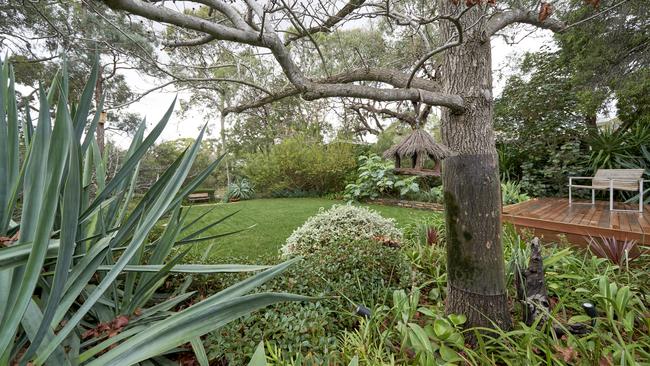
A decade ago, when South Australia was in the throes of a bad drought, “everyone was talking about trying to future-proof their gardens”, says Virginia Kennett. While interest in gardens that can adapt to a changing climate and require less water has grown since then, the Adelaide garden designer was an early adopter of the concept.
At Netherby in the city’s south, Kennett created this climate-friendly garden in 2011 for a plant enthusiast who wanted an engaging family space. The client loved the result, but after her death four years ago the property was sold. In a neat twist, the new owners turned out to be friends of Kennett’s who bought the house because of its garden, unaware that she had designed it.
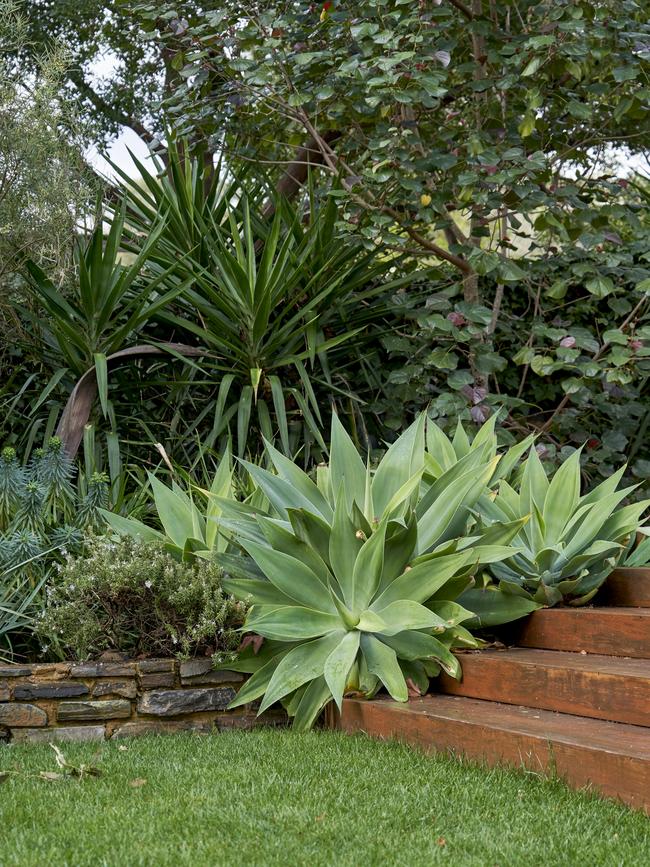
Unusually, the house is set at the back of the block, so that most of the garden area is in the front. “There was no relationship between the house and the garden when I first saw it,” says Kennett. “To resolve this we built a large, split-level timber deck to one side for living and entertaining, which then steps down into the garden.” Low retaining walls were designed to create a series of linked, usable spaces from the sloping site.
Around this “more civilised” part of the garden, she says, there is a “wilder” area that is more loosely planted and invites wandering. Informal sleeper steps with bush mulch lead to the firepit area, enclosed by low stone walls. “It’s a great area for children to play,” says Kennett.
In keeping with sustainability ethics, “we wanted to work around the existing large trees and shrubs. I’m a believer in valuing plants that are thriving and looking after them,” she says. “And it makes you more creative.”
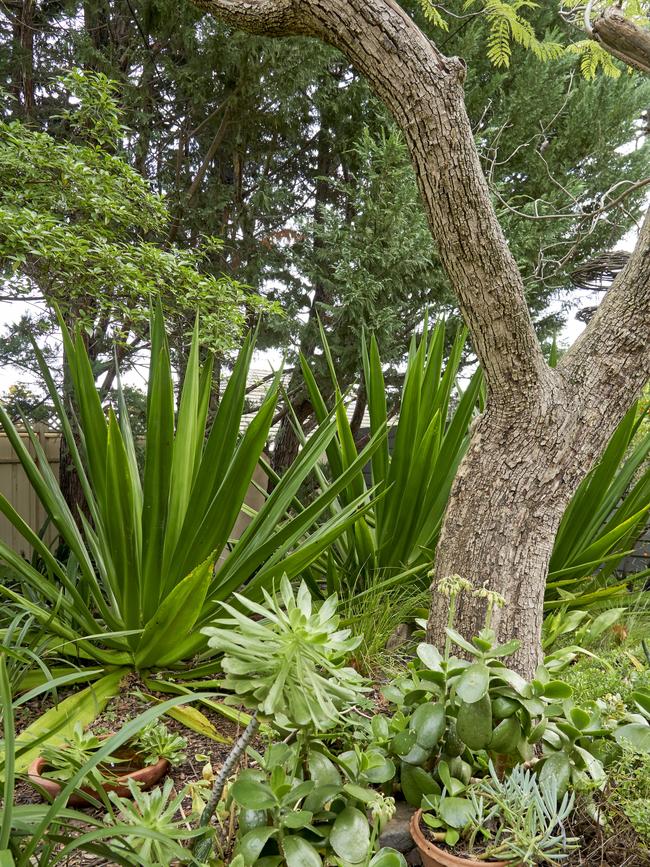
To the large liquidambar and eucalypts that already provided shade, Kennett added plants with strong structure. Plants such as tree aloe (A. barberae) provide a vertical element, contrasting against clipped, silvery domes of saltbush (Rhagodia spinescens) and germander (Teucrium fruticans). Foliage texture comes from agaves, yuccas and grasses, while statuesque honey bush (Melianthus major) is one of Kennett’s favourites for its blue-grey, textured foliage and flowers. “My friend calls the garden ‘Fifty Shades of Green’,” she laughs. “But there’s always a lot of interest in terms of form.”
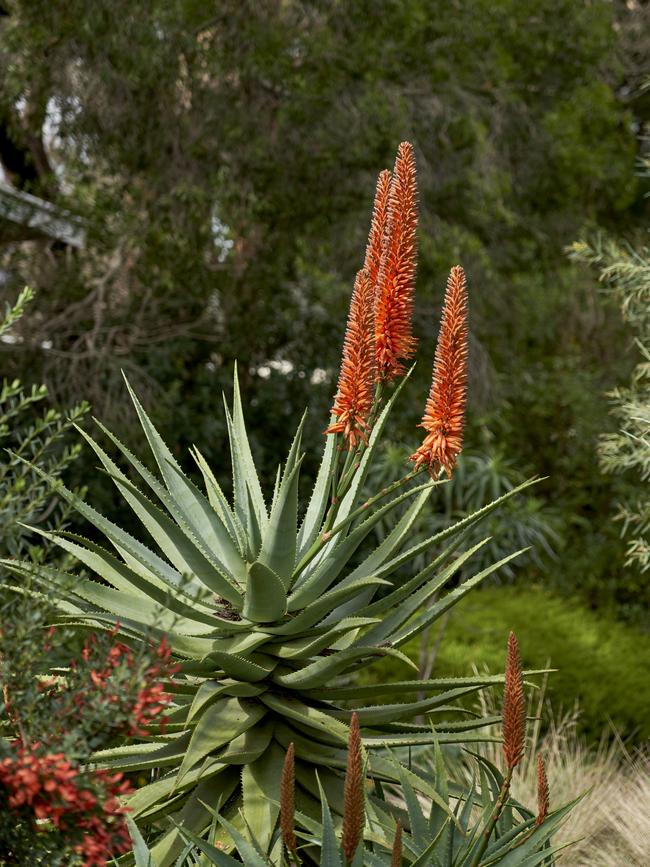
The garden was already private, courtesy of a huge, original hedge of olives along the front boundary. When the new owners took over it had become overgrown and unwieldy, so they asked hedging expert Kurt Wilkinson to restore it. “He cut it back super hard and I had to reassure my friends it would come good,” Kennett recalls. “It bounced back beautifully.”
The new owners love the garden, she adds. “They’re both keen gardeners who, being retired, can put time into it.” The design is unchanged, but new plants are being added to attract small birds such as honeyeaters.
For anyone interested in climate-compatible gardening, Kennett recommends the Mediterranean Garden Society (mediterraneangardensociety.org): “They’re a fantastically supportive group of people who would love to get more young people involved.” The society has branches in South Australia, WA and Victoria.
Q&A
The last of my cherished lemons has been violated. Something eats the peel and pith and on one, the flesh too. What’s the culprit? Should I bag the tiny new lemons? Tina Faulk, by email
Both possums and rats eat the rind off lemons, sometimes leaving perfectly skinned fruit hanging intact. With rats you might see twin grooves from their incisor teeth; they also gnaw the bark of citrus trees in winter, often ring-barking them. Possums are more likely to eat the whole fruit. They both attack mature fruit; small fruit should be fine.
My potted cyclamen looks healthy but the leaves and pot are sticky. Should I be worried? Debbie Terrett, Kadina, SA
Sap-sucking insects such as scales, mealybug and aphids exude sticky, clear honeydew. They can be hard to see; tiny brown scales can cluster along leaf veins while mealybug looks white and fluffy, hidden down in unfurled leaves and the soil. Spray foliage thoroughly, both sides, with a horticultural oil or Eco-neem. Repeat after 10 days. Eco-neem can be used as soil drench.
My Agave attenuata has produced a huge flower spike about 3m long that bends over at the top. Is this rare? Richard Faure-Field, Ashmore, Qld
They were called spineless century plants when it was thought they took 100 years to bloom but they can do it in five and it’s not rare. The long spike is covered in creamy, bell-shaped flowers that open progressively down the spike. Pups can develop directly on the flower stem and you’ll also likely get seeds. The mother plant slowly dies after flowering but this stimulates new pups to grow at the base.
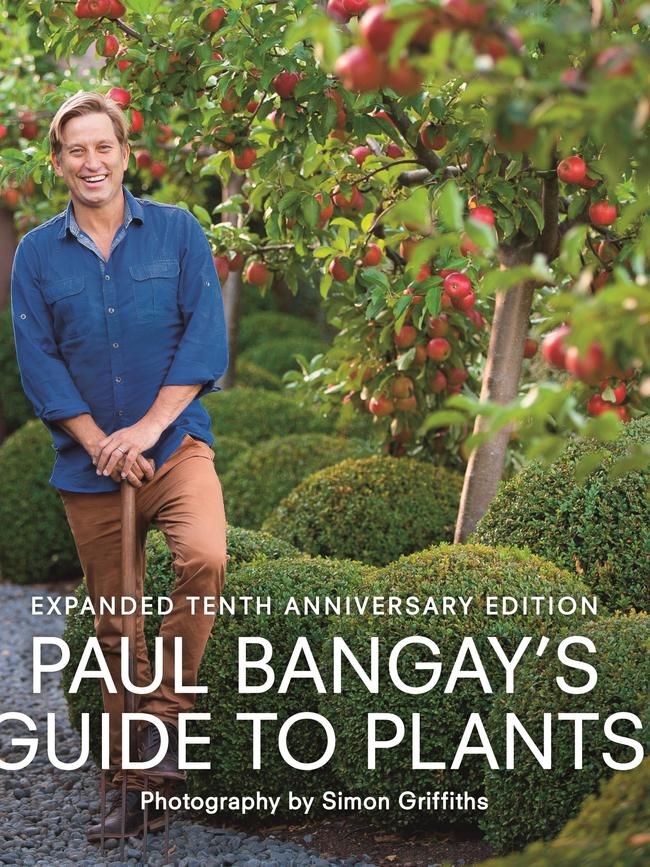
Send your questions to: helenyoungtwig@gmail.com or Helen Young, PO Box 3098, Willoughby North, NSW 2068. The best question for August wins the newly released Paul Bangay’s Guide to Plants ($60) plus Stonefields By the Seasons ($60). July’s winner is Don Frayne of Perth for his question about cockroaches in worm farms.




To join the conversation, please log in. Don't have an account? Register
Join the conversation, you are commenting as Logout